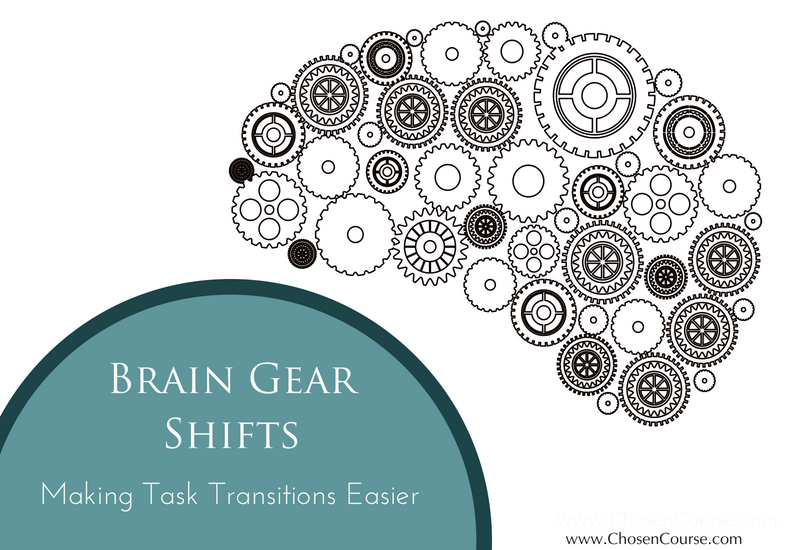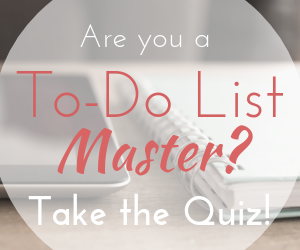Since becoming a parent last year, there is one lesson with which I’m getting a whole new level of crash course experience. How to transition my brain from one mode to another as rapidly as possible. Do you know what I’m talking about? You’re in parent mode, but now it’s time to switch to professional mode and your brain feels like sludge resisting the gear change. Even if you’re not a parent, I know I experienced this too when shifting between personal and professional time, particularly at the beginning and end of the work day.
Whether you’re changing gears because your baby’s down for a nap, or you need to stop work to fit in that workout before the end of the day. All of us have “hats” or modes that we swap between throughout a day. The question is how can we do it even more effectively and painlessly?
Therefore, I write this post first because I know I’m not the only person who’s felt this challenge at times and second to remind myself of all the great techniques that can make this gear shifting easier. Let’s explore a few together…
Make a loose plan.
If you don’t know specifically what you intend to do during a day, then you will never get around to the important stuff and you’ll find that your whole day is full of the mundane time fillers. Generally, if you don’t know specifically what you need to be working on, then it will be even harder to get motivated to “do work” or get things done. That’s why the first step is always to have a clear plan for today’s tasks in place as early in the day as possible (and preferably the day before.)
Now, I am not suggesting that you prepare a rigid schedule, rather I’m encouraging you to use your Inspired Action & 3 bonuses to choose where you want to put your attention rather than letting the day happen to you and staying in reactive mode constantly.
However, remember that the goal is to get your Inspired Action commitment done. The 3 bonuses are where you choose to put your attention next once that’s complete, and if you get all 4 planned tasks done, then ROCK ON! You’ve had an amazing day. Everything else is extra… that’s the stuff that naturally comes up throughout the day to which you just are responsive as necessary. Everything else is about fluid flow rolling through your day, but without your Inspired Action and 3 Bonuses it’s easy for the whole day to become fluff, flow, and have absolutely nothing valuable and intentional happen.
Transition Rituals
You’ve been flat out working on a particular project (or taking care of your infant or child). Now that you’ve got a moment to yourself, and you know that your Inspired Action for today is calling your name, one excellent option is to start with a moment of physical body care.
Yes, a bathroom break and a glass of water or cup of coffee or tea might be part of that. You might even grab a snack, but turn it into an intentional transition ritual rather than an extended switch off time. Can you create a sequence of activities that help you move from one mode to another?
Preferably this sequence would take no more than 5-15 minutes, but it would include activities that are physically and mentally restorative. Here are a few examples that come to mind:
- Bathroom break
- Get a drink, cup of coffee/tea, refill your water bottle
- Find a snack
- Stretch, do some quick yoga poses, run in place, do jumping jacks
- Look out a window at something green or beautiful for a full minute
- Close your eyes and focus on your breathing (as long as you’re not just going to fall asleep)
Certainly, you could use different activities at different times, but it might be even more powerful if you developed a consistent sequence of actions that helps clear the decks in your body and brain to allow you to transition more easily. Essentially, you’re creating a personal transition ritual that provide you with space to put down what just happened, have a moment to breathe, then refocus on what’s coming next. Ideally, you would repeat this ritual daily (or even multiple times each day as needed) to turn it into a habit that creates a bridge for you between activities.
Gear Shifting “Assists”
Sometimes a quick self-care break simply doesn’t feel like enough to get your brain unplugged from what was just happening and revving up for what’s coming up next. At these times you might need an “assist” to get those gears shifted mentally.
Since I’m somewhat auditory (or auditory-digital for the students of NLP out there…) I find that a music or sound stimulus helps me quite a bit. Here are some examples of what I mean:
- Create a themed playlist “soundtrack” (or several). Perhaps you have one for work time and another for family time, maybe one for exercising and another for wrapping up at the end of the day. You could even turn your day into a movie that shifts between various musical scores as you move from one “scene” to the next.
- Listen to podcasts, audio books, other spoken audio – To help me get into work mode I’ve found that putting on a work-related podcast primes my brain while I’m tossing in that morning load of laundry or grabbing breakfast, so that my brain is already heading in the right direction when I sit down to work.
Some of you might need a visual “assist” cue rather than an auditory one. Here are some visual examples:
- Look over your project plan, mind map, vision board over your morning coffee for 2-3 minutes before starting work
- Flip through a related magazine or newsletter (your favorite industry rag, health and fitness magazine, or family/parenting guide) allowing your mind to start steeping in the language and concepts of your next activity. Remember, don’t turn this into a procrastination technique by spending 20 minutes reading everything in the magazine. The goal is to just prime your mental pump with a few minutes of related visual stimuli.
What might be some physical or kinesthetic cues?
- Moving into your office and sitting down at your desk, or putting on your exercise clothes, or switching out of your work clothes
- Physically collecting the items you’ll need for your next project, or putting away the stuff you just finished with to start from a clean, clear surface.
Choose whatever combination of physical, auditory, or visual cues help you to mentally shift gears, and then practice them… repeatedly.
You might need a combination of different actions to help your brain make the adjustment, but often if you can find one or two that work well, then you can go back to them repeatedly.
Transitions for the Non-commuter
While I don’t miss the days of having a commute to and from my client locations when I was doing my hands on professional organizing a decade ago, that was a time when there were very clean transitions. My client work started when I arrived, and ended when I left, but even then I used to listen to an fluffy, fiction audiobook as a drove to help my brain let go of what I was doing before and create space for what would come next.
That was one of my first personal transition rituals, and now I’m entering a new phase where I’m finding versions that are shorter and can be used more frequently to shift gears between baby-time and work-time when she’s down for a nap. I hope taking this tour of transition techniques has inspired you with a few ideas. Maybe you have a different one that you’d like to share with folks in the comments below?
If you feel like your days are an un-ending mush of “stuff” from beginning to end with the important things never getting done, then it might finally be time to create your Life Rhythm Map.
Click below to download your Life Rhythm Map template and start your FREE Mastering Energy Management mini-course that walks you through how to use your life rhythm map to improve your daily energy management and life balance.



